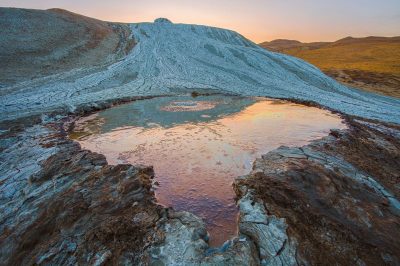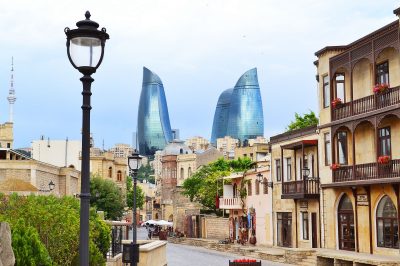After we have already introduced you to some of Azerbaijan’s regions, today we are going to the deepest south of the country. We will pass by old fortresses in Länkäran, visit oil rigs in Sirvan, drive to Aggol to the second largest lake of the country and have a look at the unique nature reserves of Kysyl Agach and Hirkan. Let’s go!
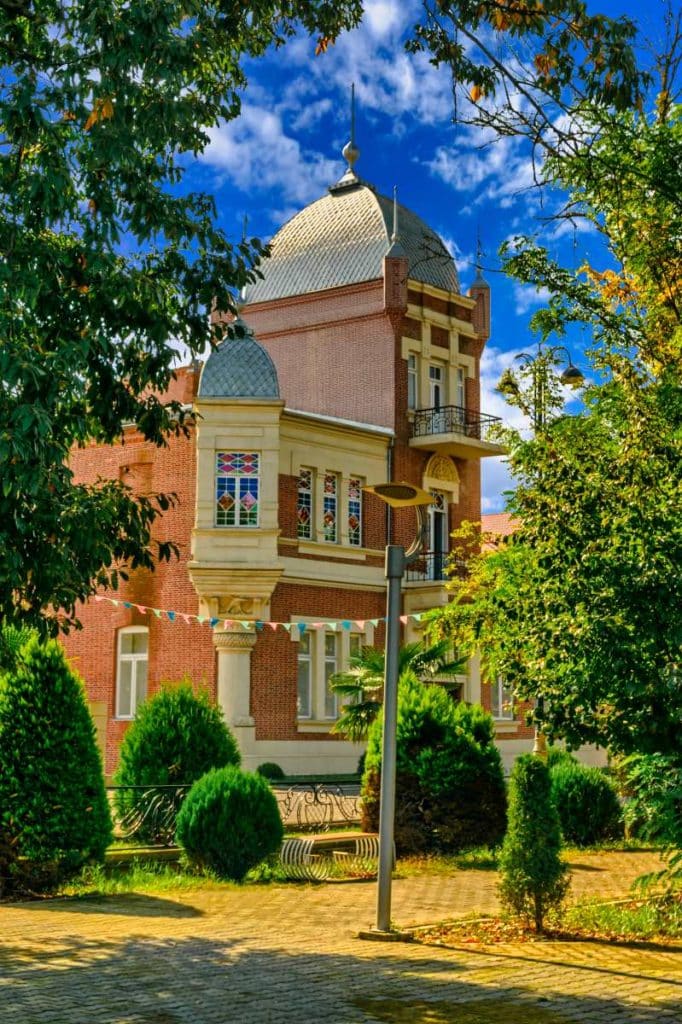
Lankaran (Lənkəran)
With good connections to Baku (a train connects the capital with Lankaran and then continues to Astara) and the airport, Lankaran is easy to reach and we can recommend it as a base camp for your exploration of southern Azerbaijan.
Today, Lankaran has a good 50,000 inhabitants, making it, together with Sirvan, the most important city in the south of the country. The region around today’s Lankaran, which was already settled in the Stone Age, was in later centuries the plaything of the great powers Russia and Persia, who wanted to increase their influence in the region. Later it became part of the Azerbaijan Soviet Republic and later of independent Azerbaijan. Today, Lankaran is most famous for its bazaar and its Great Mosque. You can also learn about the turbulent history of this place in the city’s Archaeological Museum.

The fortress and the khanate of Talysh
However, the landmark of Lankaran is its fortress ruins. The defensive structure was built in the 18th century and served as a retreat for the troops of the Talysh Khanate. This small state existed only from 1747 to 1826, its capital was first Astara and then Lankaran. Originally, the small empire came into being when the Persian governor died and one was thus almost automatically released into independence.
The Safavid Empire (the Safavids were the ruling dynasty in Persia at the time) in the south, however, did not want to resign itself to the loss and soon went to war against the Khanate. Desperate, they turned to Russia, Catherine zhe Great sent troops to help, and in 1802 the area became a Russian protectorate. After the capture of the city and the fortress in the Russian-Persian War in 1809, the city was recaptured after four years, which was impressively shown in the picture above. Unfortunately, the fortress was destroyed in the process, so you can only see its ruins here today. However, two mosques were later built on the site, which are still standing here today.
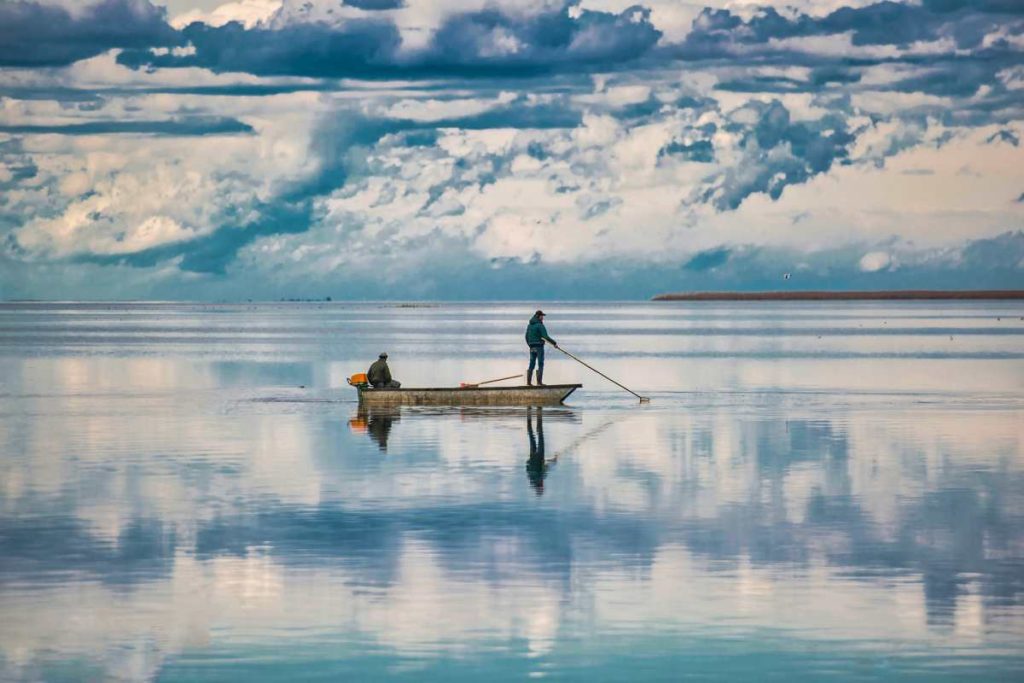
Lankaran – Home of the Talysh people
Around 92% of the Azerbaijani population are Azeris and Azerbaijani is by far the most widely spoken language in the country. Not so in Lankaran. Here, large parts of society belong to the Talyzh people, whose name is derived from the mountains on the Azerbaijani-Iranian border. They live on both sides of the border and have been able to preserve their cultural independence to this day. Exactly how many of them live here in southern Azerbaijan and northern Iran is difficult to say. According to the last Azerbaijani census, up to 100,000 people in Azerbaijan belong to the minority. However, many do not identify themselves as such, so the number of Talysh in Azerbaijan could be higher. Worldwide, the people are said to number as many as 2 million.
The Talysh’s love of freedom even led them to proclaim an autonomous republic in the summer of 1993 that encompassed all of southern Azerbaijan, with active Russian support. The experiment failed because of the support of the local population and ended with the arrest of the leaders. However, the Azerbaijani central government took this episode as an opportunity to strengthen the rights of national minorities.
Beaches
Lankaran is mostly known as a beach resort and vacation spot for Azerbaijanis. Although most of the beaches are located in the north of the Absheron Peninsula, there are also some picturesque places around Lankaran. Just drive from Lankaran along the coast to the north or south to find the ideal spot for you. Although the infrastructure here is not as good as in the north of the country, the beaches are often relatively untouched and with a little luck you will have them almost to yourself. A good 10 kilometers west of the city are the thermal springs of Andjin, where you can also swim.
Shirvan (Şirvan)
With its nearly 80,000 inhabitants, Shirvan is the seventh largest city in the country and by far the largest city in southern Azerbaijan. At the beginning of the 20th century, there was only a small village here, but it grew rapidly at the beginning of the Soviet period. The settlement history of Shirvan is relatively unusual. Archaeological excavations suggest that an important trade route used to run here, and the remains of a village from the Middle Ages were also discovered. Later, it was not Azerbaijanis who settled here at first, but 2000 Cossacks who were sent to the region as settlers under Catherine the Great.
Cossacks and communists
On the one hand, the Cossacks were supposed to cultivate the land, but on the other hand, they also served as a kind of protective force against an impending Ottoman attack. They called the place Zubovka, the name remained until 1938. From then on, the settlement, which had grown to a considerable size, bore the name of an Azerbaijani revolutionary: Ali Bayramli. It was not until 2008 that this name was dropped and Shirvan was named after the region and steppe in which the town is located.
Shirvan served as a technical experimental field for the Soviets, as the country’s first petroleum-fueled thermal power plant was put into operation here. Shirvan is also known as an important center of cotton processing. Today, Shirvan serves tourists as a “base camp” for exploring the national park of the same name.
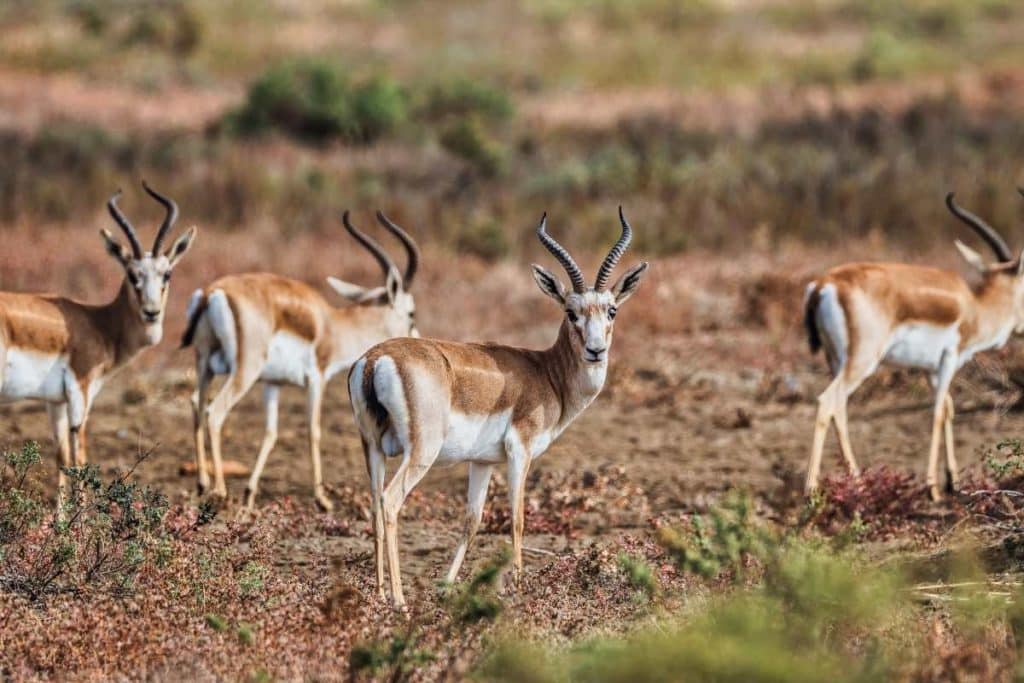
Shirvan National Park – A home for gazelles
A safari in Azerbaijan? That’s probably only possible in Shirvan National Park! This was designated as such in 2003 and is home to numerous songbirds, wolves, jackals, owls and eagles. Gazelles have also lived here since time immemorial, archaeological findings prove their existence here even about 2 million years ago. They have been hunted since ancient times, but this never significantly decimated the populations of these unique creatures in the region. Only when hunters and poachers used cars to chase the nimble quadrupeds did their numbers decrease dramatically. Soviet aerial photographs showed that there were only about 130 gazelles left in the entire country, and their final extinction seemed only a matter of time.
Efforts were made to protect the gazelles as early as the 1960s, and by the turn of the century, 3,000 of the graceful animals were once again living in the semi-desert, desert and pasture landscape that characterizes today’s national park. With the designation as a national park, the protected habitat of the gazelles was increased fivefold, and today it covers an area of almost 550 km². Eco-tourism now plays a major role here, with bicycles you can take tours here for hours and admire the unique beauty of the region.
Aggol (Ağgöl)
“White lake” is the literal translation of Ağgöl from Azerbaijani. The lake is located in the Transcaucasian Depression in the middle of a semi-desert landscape between the Small and the Great Caucasus. Just like Kysyl Agach further south (see below), Aggol is an important wintering area for migratory birds. More than 140 species have been counted here so far, including partridges, babblers and swans. But also majestic white-tailed eagles can be seen here with a little luck. No wonder, because the fish species occurring in the lake (among others starlings, pikes and carps) offer them an ideal food basis. The lake is connected with the Kura River, the largest in the Caucasus. About 150 kilometers to the east, it flows into the Caspian Sea, but still brings rich prey to the many birds here on the way.
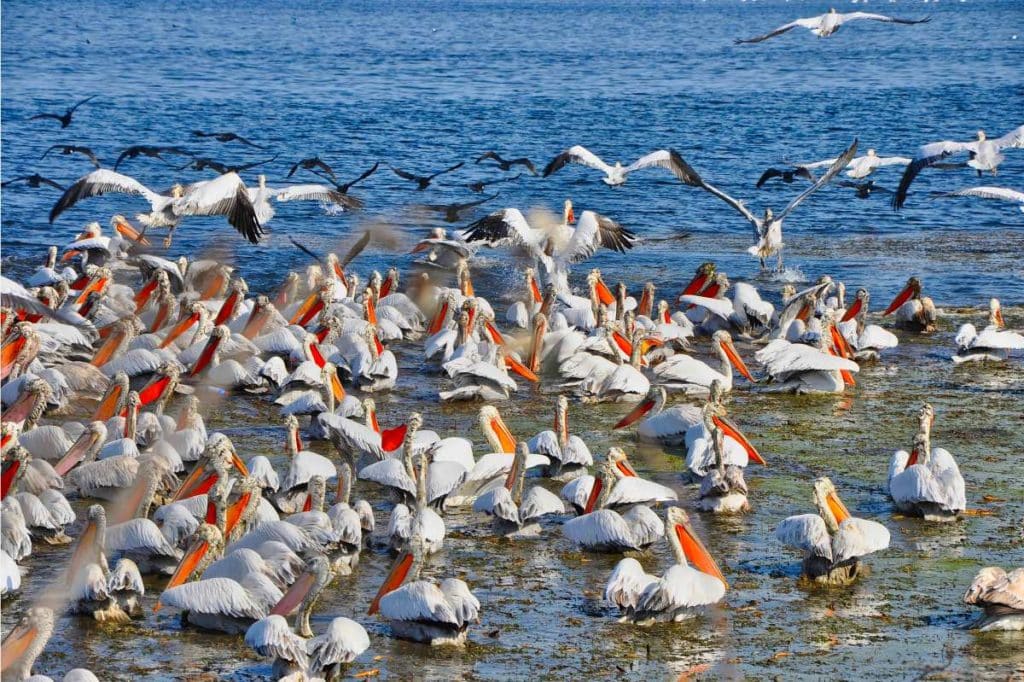
Kysyl Agach (Qızılağac)
On the west coast of the Caspian Sea there is a huge bird sanctuary, which was put under protection almost 100 years ago. The Kysyl Agach Nature Park (Qızılağac dövlət təbiət qoruğu) is considered a habitat for many unusual birds, but numerous migratory birds also stay here. The landscape is characterized by its numerous lagoons, and the islands offshore from the mainland are also part of the protected area; about half of the reserve consists of water areas. In addition to two bays of the same name, Kysyl Agach also includes part of the Sara Peninsula, which extends far into the Caspian Sea.
In winter you can meet here various species of ducks, geese, pelicans, swans, herons, ibises and even flamingos! Thus, Kysyl Agach is the largest wintering region for migratory birds in this part of the world. The inland area, consisting mainly of semi-desert, lies below sea level and serves as a habitat for wolves and wild boars, among others. Unfortunately, the region still has to contend with poachers who catch the exotic birds and resell them on the black market. This is also the reason why most of the animal species listed in the “Red Book” of Azerbaijan’s endangered species are at home here.

Hirkan National Park
At the southernmost tip of Azerbaijan, in the provinces of Länkäran and Astara, there is a unique natural paradise and the undisputed highlight of southern Azerbaijan. Hirkan National Parc (Hirkan Milli Parkı) is located in the hinterland of the Caspian Sea and just a stone’s throw from the Iranian border. The area had long been designated as a nature reserve and was elevated to the rank of a national park in 2004, now covering an area of a good 400 km².

Here you can see all the diversity of this small country, where almost all known climatic zones are represented. The area, consisting mainly of forests and lakes, is subtropical in character and is now home to countless animal and plant species, many of which can only be found here. Part of the park extends over the Talysh Mountains in an extensive rainforest zone. There are no hotels here for environmental reasons, but tours of the national park are organized from Lankaran.
The forest makes up about 90% of the entire Hirkan Park and is a real primeval forest where nothing seems to have changed for thousands of years! Depending on the height above sea level, very different trees grow here; scientists have counted around 150 species of shrubs and trees here. Due to the abundant rainfall, the Hirkan National Park is considered the rainiest region in the country, which in turn was and is conducive to the development of the local species richness.
But it is not only the wealth of plants that makes the park so special. Many people are particularly taken with the animal inhabitants. Species such as the Caucasian pheasant, the Caspian titmouse or the Caspian tiger actually live only here. One can hardly imagine that bears, tigers, lynxes and flamingos live together in such a small space.
Speaking of flamingos, especially many of them live around Khanbulag Lake, they are among the most graceful inhabitants of the par. If you are lucky, you can also spot white deer here. No wonder that the Azerbaijani government has made many efforts to protect the national park more and more. In October 2020, UNESCO completed a review process, at the end of which the park was included in the World Heritage List.
Hiking to Sim
From Lankaran you can easily take a hike to the remote village of Sim in the Talysh Mountains. “Rocky” is the translation of the village’s name and this is quite apt, because the place is actually located on a rock. The local population is mainly engaged in beekeeping and produces a honey that is famous throughout the country. The historic houses of Sim, in combination with the moss-covered rocks and the tall trees, create an evocative atmosphere, which is topped by the plunging waterfall that rises at the end of the village. The locals are also happy to organize guided tours to the waterfall as well as to the local reservoir and the mandarin orchards of the region.
Astara
The city of Astara, located at the southernmost tip of Azerbaijan, is only partially in Azerbaijan. How so. Since a peace treaty signed between Russia and Persia in the 19th century, there has been a border here that today separates Azerbaijan and Iran. The Iranian part of the city – a majority of ethnic Azerbaijanis also live in the region – is more than twice the size of Astara of the same name north of the border. Nevertheless, there is a lot to see here in particular.
As a visitor, you are first welcomed in Astara by a huge samovar. There are also excursions into the surrounding area with its rice fields, mountains and forests – a hiker’s paradise little known so far! But also the beaches here offer themselves for a vacation.
How to get to the south of Azerbaijan?
Länkäran has an international airport, which, however, is only served from Moscow and mainly brings the many Azerbaijani guest workers to Russia. However, there is also a domestic connection to the capital Baku, both routes are served by Azerbaijan Airlines, among others. From the Azerbaijani capital, a well-maintained road leads to Länkäran. Either you take a rental car or one of the buses that go to the region (read more about traveling in Azerbaijan here). Alternatively, you can take a cab from Baku, which is much cheaper than you might expect.
Book recommendations
You want to read more? Then we recommend the following books about Azerbaijan.
No products found.
Classical travel guide, that also covers Armenia and Georgia.
No products found.
Everything you need to know about Azerbaijan’s troubled past, presented in a nutshell.
No products found.
You want to know more about Azerbaijan’s culture? Than this book is the right choice!
No products found.
To prepare your trip, it is best to learn a few words in Azerbaijani. This book is great for beginners!
No products found.
Want to learn how to cook Azerbaijani food? Than this is the right choice!
No products found.
Portrait of Azerbaijan, presenting the country in all its facets.
How did you like this article about the Wild South of Azerbaijan around Hirkan, Aggol, Kysyl Agach and Sirvan? Let us know and write us a comment! And make sure to follow wildeast on Facebook or Pinterest to stay updated about upcoming articles!


